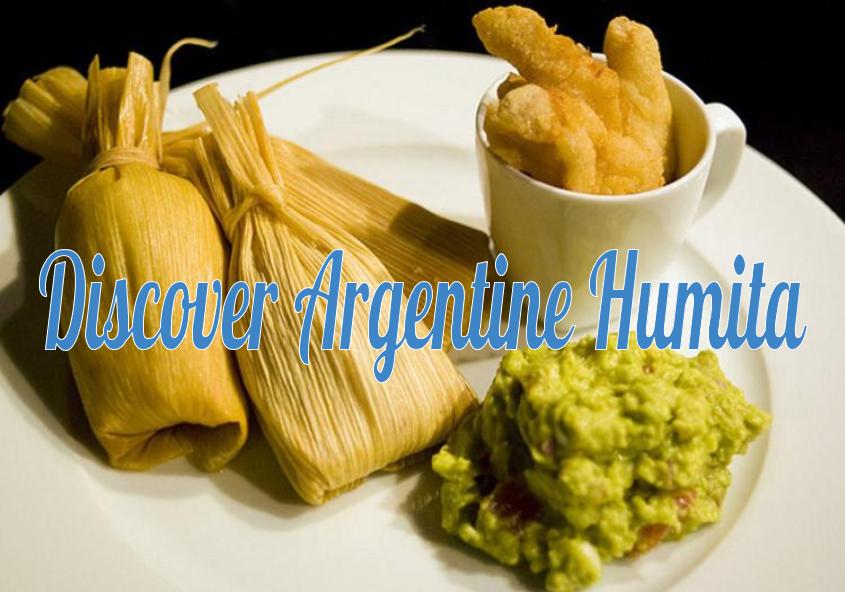Humitas
Meat, it’s the Argentine tradition. Learning how to prepare an asado has been grilled into the DNA of the youth for generations. But, what other cuisine is traditional in Argentina? I’m always fascinated about how food can tell where cultures have descended from and how they have changed with their surroundings. This fascination leads me to try everything and anything, from every type of meat/cut to sandwiches and empanadas, which lead me to discover the local dish which is humita.
What is Humita ?
Humita is a dish that dates back to the indigenous cultures of the Americas and can be found in most Latin American countries. Each country having their own twist and in some countries prepared sweet. In Argentina, most humitas have the following ingredients fresh corn, sautéed onions and some spices. Depending on the region/cocinero it could have red peppers, milk, spring onions, or whatever else they got to use. Traditionally dough is wrapped in corn husks and boiled/steamed similar to a tamale. Due to the Italian immigration in Argentina, it is quite common for cheese to be added. It is also a common flavor of empanadas that can be found at most panaderias (bakery).
Humita History
The origins of the Humita (similar to many dishes dating back to indigenous cultures) has little documentation or knowledge of where it started. Andean cuisine is where some of the first stories of humitas being made originated. Andean cuisine comes from the west coast of South America, from Venezuela down to Argentina. The Incan Empire, which occupied a lot of these west coast countries, is said to have helped unite and spread the indigenous culture of the Andes and in turn, the indigenous dish called “jumint’a”. Jumint’a was the native dish that humita came from and was prepared mas o menos the same way as prepared today. Traditionally it was cooked in an earth oven called a “panchamanca” and was cooked with a load of other meats and vegetables. As people migrated to different parts of the continent so did their versions of the humita.
Learn More About Other Argentine Food
Humitas from Bolivia, Peru, Brazil, Paraguay, Chile and other Latin American Countries
Most countries in Latin America have their own way of making a Humita and I am sure generalizing them by region will not even scratch the surface to the amount humita changes from family to family. In Brazil it can be known as a “Pamonha” and are normally served plain with just fresh corn, but can also be found stuff with cheese, meat, and ground coconut for a sweeter version. In Venezuela they are known as “hallaquitas” (some call them a Bollito, but that´s a debate that this gringo will stay clear of) usually served as a side dish and topped with butter but can be found stuffed with chorizo or cheese. In the central andes (Bolivia/Peru) they are prepared either savory or sweet, sweet usually having raisins, cinnamon, and sugar. Chile serves their version with Basil and possibly chili. I can go on as have have only just begun scratching the surface of different ways it can be served but the general consensus seems to be that fresh corn is a must!
Humita in Argentina
Humita in Argentina is probably most commonly know as the flavor of an empanada. In which it is prepared much differently to the relleno (filling) of other countries tamale type version. But you can still find the traditional ones at local ferias. The filling of empanadas are much similar to that of creamed corn but with some onions and sometimes capsicum and herbs. To make this I dice onions and sweat these with a little butter until soft and translucent. While this cooks cut the corn off the cob and cook in milk until tender (you can leave the cob in the milk for extra corn flavor just remember to take it out). I like to take half the corn out and blend some of the corn into the milk before combining it all. Once corn is cooked/blended and your onions are soft add a pinch of flour to the onions/butter and cook for a few moments until starts to look a bit like sand (look up how to make a roux if this is foreign to you). Add your milky corn mixture bit by bit and it should thicken up to a nice filling consistency. Place in the fridge and the relleno will firm up making the empanadas a lot easier to assemble. If you want to make the tamalle version the method is much different. It involves taking the husk off the corn carefully as to not ruin the leaves as these are used to wrap the dough. Grind/process the fresh corn kernels into a dough and mix with sauteed onions and spices/seasonings of your choice (cheese is good too). Place the dough into the Corn husks and wrap into a parcel and tie it to secure the contents will not fall out. Cooking methods vary, it seems traditional to boil in salted water for 30 or so minutes,but you can also bake or grill. I prefer to steam as it provides a bit lighter not so doughy dish.
Eating is an essential part of traveling for me and cooking to find a deeper understanding of culture is a great way to expand your own culinary repertoire.
Study Spanish in Buenos Aires or take Online Spanish Classes Today






